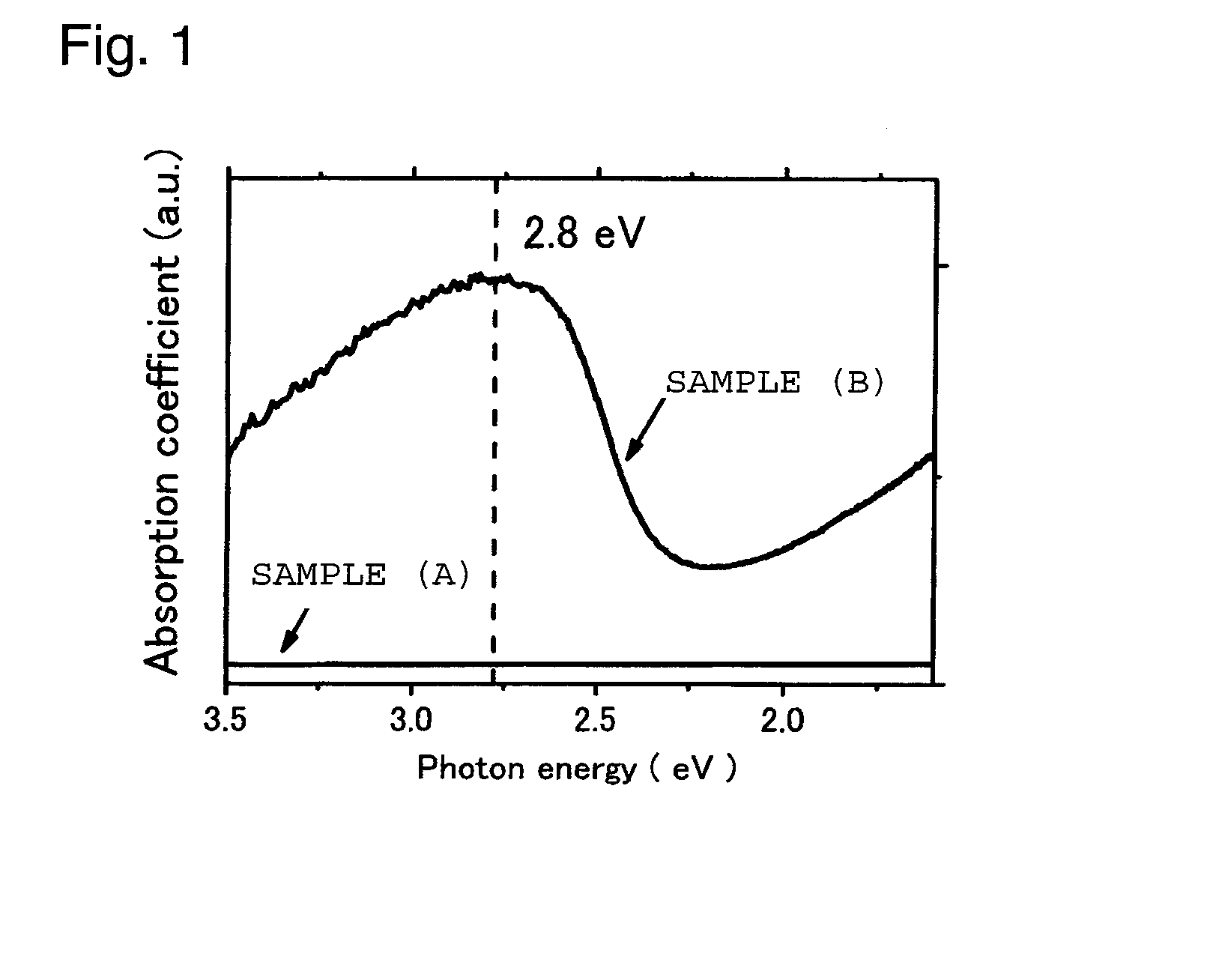Method for preparing electroconductive mayenite type compound
a technology of mayenite and compound, which is applied in the preparation of alkaline-earth metal aluminates/aluminium-oxide/aluminium-hydroxide, non-metal conductors, etc., can solve the problems of complex reaction conditions, high cost, and difficult to stably produce an electroconductive mayenite type compound with good properties at low cost, and achieve good yield and good electroconductivity. , the effect of low cos
- Summary
- Abstract
- Description
- Claims
- Application Information
AI Technical Summary
Benefits of technology
Problems solved by technology
Method used
Image
Examples
example 1
[0050] Calcium carbonate and aluminum oxide were blended so that a molar ratio of CaO:Al2O3 became 12:7 as calculated as oxides; the mixture was held at 1,300° C. in atmospheric air for 6 hours, and then cooled to room temperature; the resulting sintered product was pulverized to obtain a powder in an average particle size of 50 μm. The resulting powder (hereinafter referred to as “powder A”) was a white insulator and found to be the C12A7 compound with the mayenite type structure by X-ray diffraction.
[0051] A powder mixture obtained by mixing 0.4 part by mass of carbon powder (average particle size: 10 μm) with 100 parts by mass of the powder A was press-molded under a pressure of 200 kgf / cm2 to obtain a molded product (sample A) in a diameter of 3 cm and a height of 3 cm. The rate of the number of carbon atoms to the total number of Ca, Sr and Al atoms in this molded product was 1.9%. This molded product was placed in a covered carbon container, and heat treatment was carried out...
examples 2 and 3
[0053] 0.8 part by mass or 1.6 parts by mass of a carbon powder (average particle size: 10 μm) was mixed in 100 parts by mass of the powder A, and each powder mixture was subjected to the same heat treatment as in Example 1, in a covered carbon container. The rate of the number of carbon atoms to the total number of Ca, Sr and Al atoms in each of the powder mixtures was 3.8% or 7.6%. Each powder after the heat treatment showed deep green and was identified as the mayenite type compound by X-ray diffraction measurement. The electron density obtained by optical diffuse reflectance measurement was found to be 1.3×1020 / cm3 or 7.6×1019 / cm3.
example 4
[0054] 4.0 parts by mass of a carbon powder (average particle size: 10 μm) was mixed in 100 parts by mass of the powder A and this powder mixture was subjected to the same heat treatment as in Example 1, in a covered carbon container. The rate of the number of carbon atoms to the total number of Ca, Sr and Al atoms in the powder mixture was 19.4%. The powder after the heat treatment showed white and was identified as a mixture of CaO—Al2O3 and CaO-3Al2O3, with no mayenite type compound detected by X-ray diffraction measurement. The electron density obtained by optical diffuse reflectance measurement was found to be at most 1019 / cm3.
PUM
 Login to View More
Login to View More Abstract
Description
Claims
Application Information
 Login to View More
Login to View More - R&D
- Intellectual Property
- Life Sciences
- Materials
- Tech Scout
- Unparalleled Data Quality
- Higher Quality Content
- 60% Fewer Hallucinations
Browse by: Latest US Patents, China's latest patents, Technical Efficacy Thesaurus, Application Domain, Technology Topic, Popular Technical Reports.
© 2025 PatSnap. All rights reserved.Legal|Privacy policy|Modern Slavery Act Transparency Statement|Sitemap|About US| Contact US: help@patsnap.com

